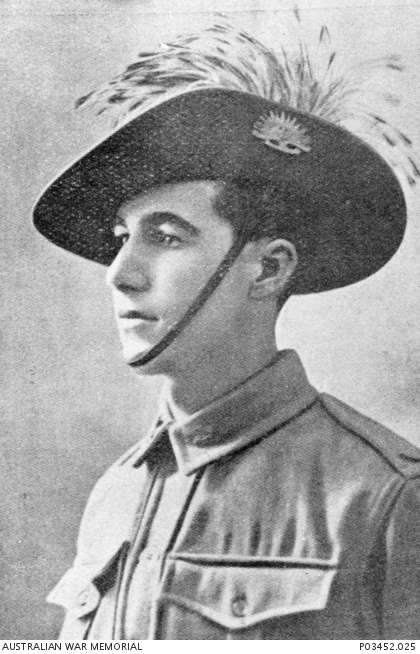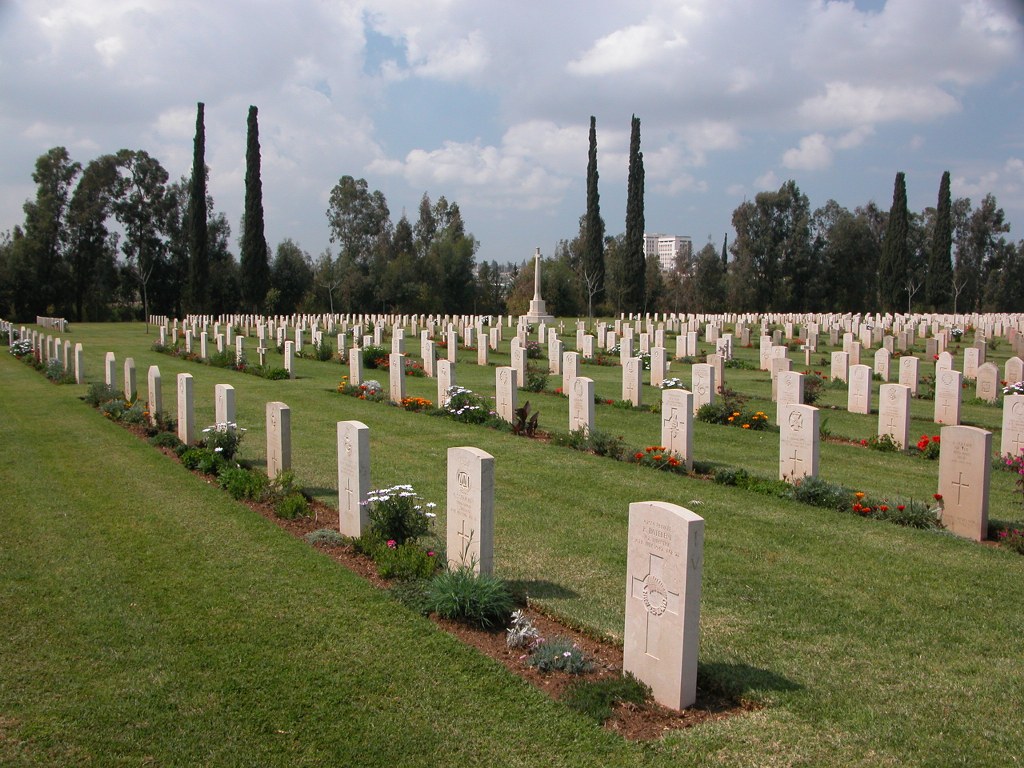The name of William Ridd Bryce is an interesting inscription on the Mothers’ Memorial that seems to demonstrate the inclusiveness of those who organised and erected the Memorial. William’s connection with Toowoomba stems from his time as a student at the Toowoomba Grammar School (1908-1912). He was born at Milton on the south coast of New South Wales and enlisted at Lismore in the Northern Rivers district. At the time of his enlistment his father was working at the E. S. & A. Bank in Byron Bay, and his mother, who was possibly a nurse, was at the Kenmore Hospital, Goulburn, NSW.
William was posted to the 2nd Light Horse Regiment that was raised at Enoggera, Brisbane, in 1914; most of its recruits came from Queensland, with a contingent from northern NSW. On his attestation papers William Bryce gave his father (also William) as NOK. He was 5’10” tall and weighed 137 pounds. He had a dark complexion, grey eyes and black hair, stated his religion as COE, and his occupation as assistant surveyor. He was 20 years and 5 months old when he volunteered at the 4th Light Horse Drill Hall in Lismore on 15 November 1915. William was medically assessed at Chermside in Brisbane, then began his training at Enoggera. He was made a corporal and embarked at Sydney for the Middle East on board A16 Star of Victoria on 31 March 1916. He was taken on strength at Tel-el-Kebir on 5 May. William saw action at the Battle of Romani in June 1916 where the 2nd LHR was heavily involved, but in October he was on an NCO course in Egypt, after being appointed temporary sergeant.
In 1917 William Bryce transferred to the Imperial Camel Corps. As the name implies, this unit fought on camels to exploit an alternative to the limitations of horses in the desert of Sinai. Most of the Camel Corps troops were Australians. (The reader may wish to seek out the humorous and moving poem Farewell to My Steed, by Oliver Hogue, who served in the Camel Corps.)
A skilled horseman, Hogue was at Gallipoli with the Light Horse and fought with the Camel Corps in the Sinai desert and Jordan. When the Cameliers were converted to cavalry in mid 1918, Hogue said goodbye to his ungainly ‘old Hoosta’. Below is the last verse of his poem.
Once more I’ll feel the thrill that only horses give to man,
As I canter gaily onward from Beersheba unto Dan;
I’ll sense the dawn-wind’s message and the mystery of the stars,
And hear again the music of the bit and snaffle-bars.So it’s farewell now, old Hoosta, our paths diverge from here;
I have got to be a Horseman now, and not a Camelier.
You were smellful, you were ugly. Now I’ve got a horse instead.
Still, you had the camel virtues, so I take back all I’ve said.
William was posted to the Reserve Company of the Camel Corps on 7 February 1917. Soon after he “revert(ed) to ranks at his own request and not to avoid a court martial.” On 7 April 1917 he was posted to 17th Company, 4th ANZAC Battalion, 1st Camel Brigade. In this force William served through 1917. In December he was involved in the attacks on the city of Jaffa, Palestine, as part of the attempt to clear the way to Jerusalem. During the battle he was admitted to the 2nd LH Field Ambulance with “bomb wounds (shrapnel) to the right side, thigh, arm, hands, neck and face”. He died from his wounds that same day, 4 December. The following day he was buried at Jaffa, “at the CMS Christian school opposite the French Hospital, near the gate”. Later his remains were moved to the Ramleh Military Cemetery, Palestine (grave M.65).
After the War, there were two interesting issues to be resolved between his father and the army. His father inquired about his son’s headstone in a letter dated 26 February 1920,
I have the honour to enclose the schedule with particulars required for inscriptions of War Graves and Roll of Honour. You will notice that the boy’s sister and myself would very much prefer that his grave should carry particulars of his Australian corps in which he departed than those of the Camel Corps, into which he transferred.
Interesting here is the concern that an Australian soldier might lose his national identity by serving, and dying, in an Imperial unit. The reply was that he had never transferred out of the AIF by his service in the ICC, and his headstone would carry the Australian insignia.
Finally, it is amazing to note that as late as 1923 William Bryce senior still needed an “exact date of decease for legal purposes”. The wheels of the Great War bureaucracy sometimes turned very slowly.
Toowoomba Grammar School Archives state that he started at the school on 4th February 1908 and left on 1st December 1912. The School Magazine of May 1918 states, ‘Only son of W. Bryce, of Byron Bay. Corporal Palestine Camel Corps. Died of wounds at Joffa, December 3rd, 1917. Aged 23.’
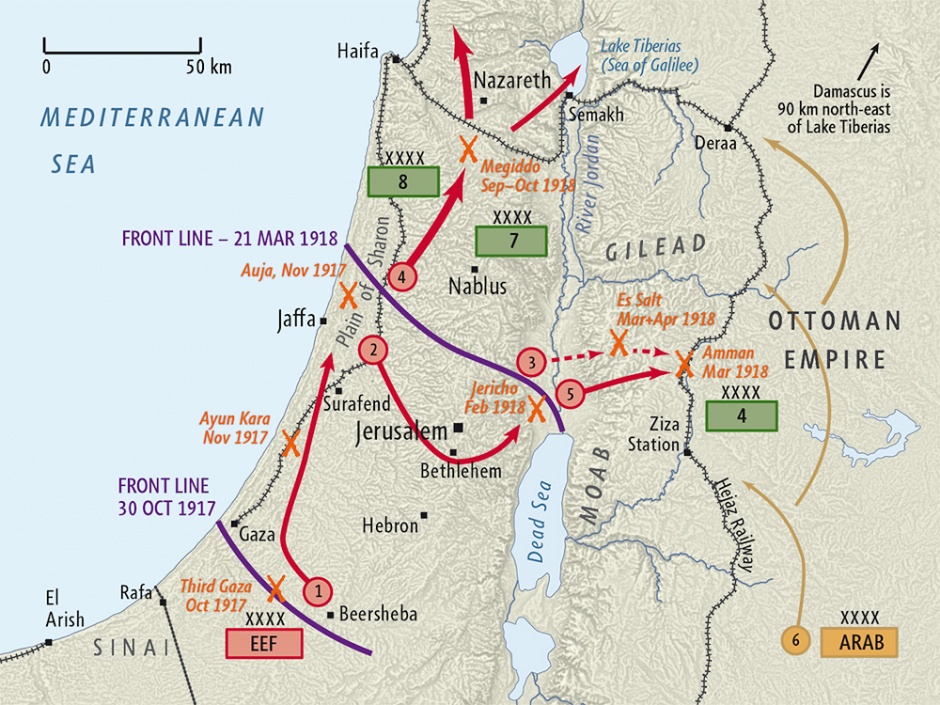
Palestine Campaign 1917
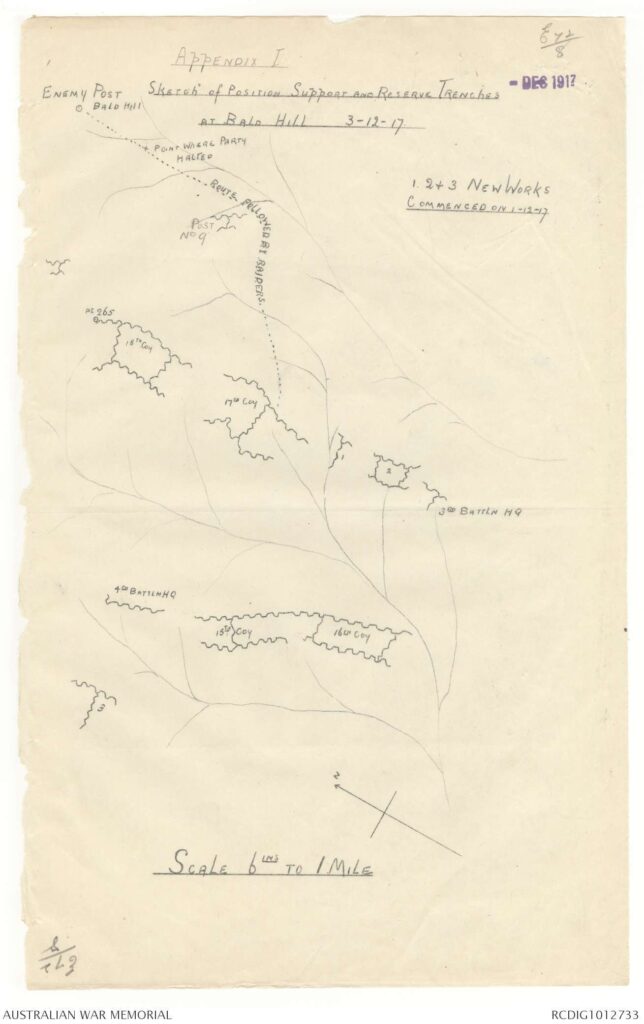
Sketch map of position of support and reserve trenches 3 Dec 1917 from AWM War Diaries for Dec 17-Feb 1918 for 4th Bn Mounted Camel Corps. A report of the attack is in the diary.
External Links:
National Archives of Australia Military Records
AWM4 unit war diaries Item No 11/9/12 Camel Corps Dec 1917 – Feb 1918
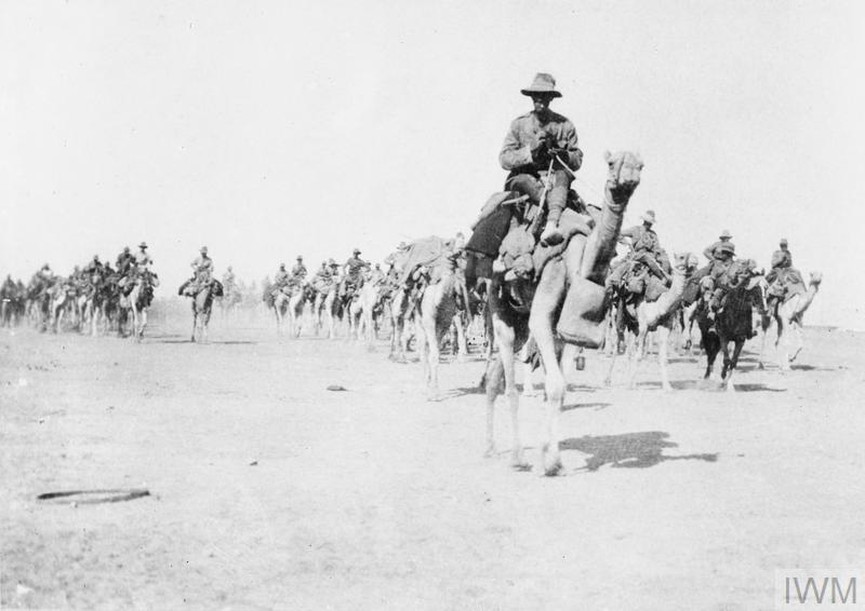
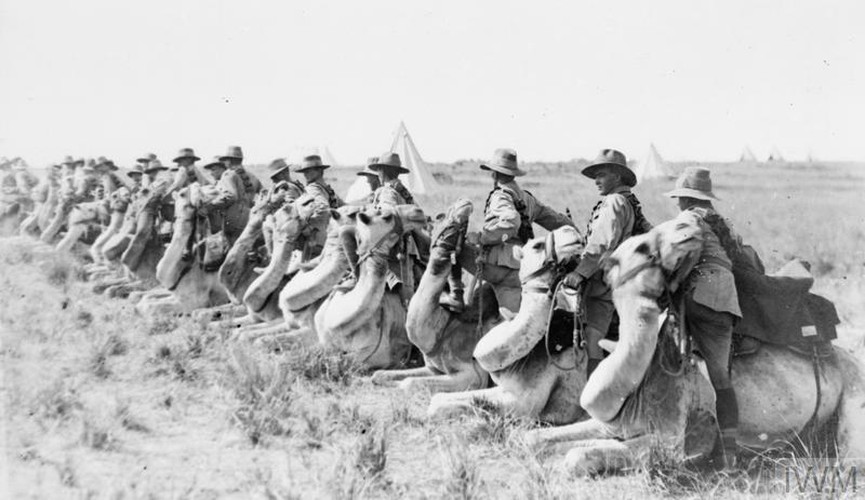
Preparing to Mount courtesy of IWM
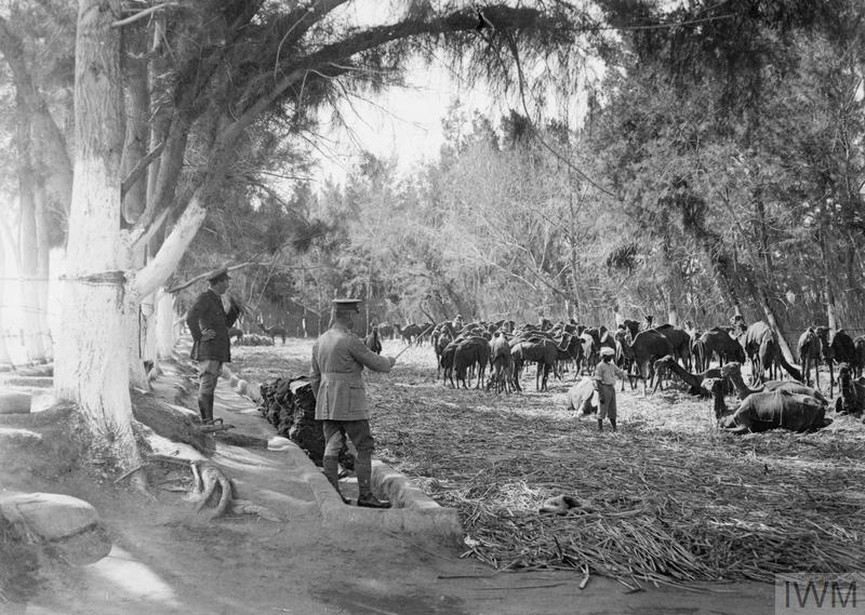
Resting in the Shade courtesy IWM


